 W
WA mound is a heaped pile of earth, gravel, sand, rocks, or debris. Most commonly, mounds are earthen formations such as hills and mountains, particularly if they appear artificial. A mound may be any rounded area of topographically higher elevation on any surface. Artificial mounds have been created for a variety of reasons throughout history, including ceremonial, burial (tumulus), and commemorative purposes.
 W
WA platform mound is any earthwork or mound intended to support a structure or activity. It typically refers to a flat-topped mound, whose sides may be pyramidal.
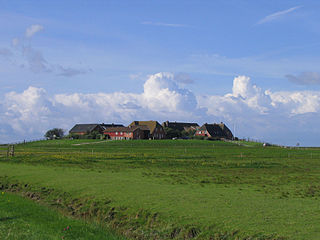 W
WA terp, also known as a wierde, woerd, warf, warft, werf, werve, wurt or værft, is an artificial dwelling mound found on the North European Plain that has been created to provide safe ground during storm surges, high tides and sea or river flooding. The various terms used reflect the regional dialects of the North European region. In English sources, terp appears to be by far the most common term used.
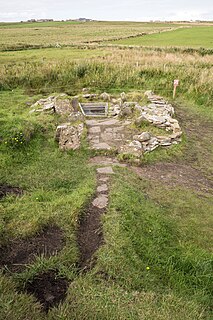 W
WA burnt mound is an archaeological feature consisting of a mound of shattered stones and charcoal, normally with an adjacent hearth and trough. The trough could be rock-cut, wood-lined or clay-lined to ensure it was watertight. Radiocarbon dates vary quite widely, the earliest being late Neolithic, with clusters of dates between 1900–1500 BC and 1200–800 BC, with some outliers in the Iron Age. There are also some dates that go into the early Medieval period. The technology used at burnt mounds has much greater antiquity and is found from the palaeolithic onwards.
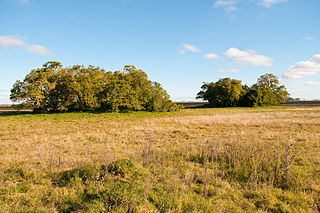 W
WThe Cerritos de Indios are a collection of more than 3000 tumulus or earth mounds found mainly in the eastern region of Uruguay and in the southernmost tip of Brazil.
 W
WFukiishi were a means of covering burial chambers and burial mounds during the kofun period of Japan. Stones collected from riverbeds were affixed to the slopes of raised kofun and other burial chambers. They are considered to have descended from forms used in Yayoi-period tumuli. They are common in the early and mid-Kofun periods, but most late Kofun-period tumuli do not have them.
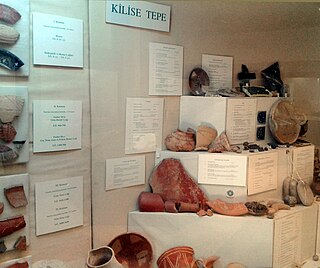 W
WKilise Tepe is a mound in Mersin Province, Turkey. It was formerly known as Maltepe. The original name of the mound is not known and Kilise Tepe in Turkish means "church-hill" referring to a church ruin.
 W
WKofun are megalithic tombs or tumuli in Northeast Asia. Kofuns were constructed between the early 3rd century and the early 7th century AD. The term is the origin of the name of the Kofun period, which indicates the middle 3rd century to early–middle 6th century. Many Kofun have distinctive keyhole-shaped mounds, which are unique to ancient Japan. The Mozu-Furuichi kofungun or tumulus clusters were inscribed on the UNESCO World Heritage List in 2019, while Ishibutai Kofun is one of a number in Asuka-Fujiwara residing on the Tentative List.
 W
WThe archaeological site of La Galgada in Peru is an example of a ceremonial monument built within the Kotosh Religious Tradition during the preceramic, or Late Archaic period of Andean history. The site itself is located on the eastern bank of the Tablachaca River, the principal tributary of the Santa River. The site is located in the Tauca District of what is now the Pallasca Province of the Republic of Peru.
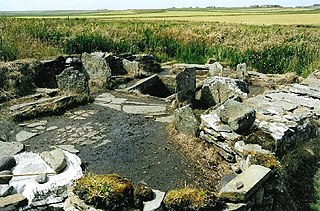 W
WLiddle Burnt Mound is a Bronze Age site on the island of South Ronaldsay, Orkney. The site consists of the remains of a building and a mound that surrounds it on three sides. The purpose of the site is controversial, but most investigators believe burnt mounds hosted a "domestic function", perhaps related to cooking.
 W
WMagatama are curved, comma-shaped beads that appeared in prehistoric Japan from the Final Jōmon period through the Kofun period, approximately ca. 1000 BCE to the sixth century CE. The beads, also described as "jewels", were made of primitive stone and earthen materials in the early period, but by the end of the Kofun period were made almost exclusively of jade. Magatama originally served as decorative jewelry, but by the end of the Kofun period functioned as ceremonial and religious objects. Archaeological evidence suggests that magatama were produced in specific areas of Japan and were widely dispersed throughout the Japanese archipelago via trade routes.
 W
WThe Montem Mound is an ancient mound of earth. It lies on Montem Lane, around half a mile west of central Slough, Berkshire, overlooking the Chalvey Brook, a minor tributary of the River Thames.
 W
WThe various cultures collectively termed "Mound Builders" were prehistoric, indigenous inhabitants of North America who, during a 5,000-year period, constructed various styles of earthen mounds for religious, ceremonial, burial, and elite residential purposes. These included the pre-Columbian cultures of the Archaic period, Woodland period, and Mississippian period; dating from roughly 3500 BCE to the 16th century CE, and living in regions of the Great Lakes, the Ohio River Valley, and the Mississippi River valley and its tributary waters.
 W
WMount Manisty is a large man-made hillock located between the Manchester Ship Canal and the River Mersey 1.5 miles (2.4 km) northwest of Ellesmere Port in Cheshire, England. The mound, which is 100 feet (30 m) tall, was created from earth excavated during the building of the ship canal between Eastham and Ellesmere Port in the late 19th century. The feature forms a narrow elevated stretch of land between the canal and the river.
 W
WSerpent Mounds Park is a former historical and recreational park located in Keene, Ontario, Canada. Serpent Mounds operated as a provincial park, established in 1955 through a lease with the Hiawatha First Nation, a historic Mississaugas people. During this time, in 1982, the mounds were designated a National Historic Site, comprising six sites, including on east Sugar Island. From 1995 to 2009, the Hiawatha First Nation operated the park privately, offering camping facilities, beach access on Rice Lake, a cultural centre, and interpretive walks among the historic serpent and nearby mounds. The park has been closed since 2009.
 W
WIn archaeology, a tell or tel, is an artificial topographical feature, a species of mound consisting of the stratified debris from the accumulated refuse of generations of people who once formed a settlement and dwelt on the same site. A classic tell looks like a low, truncated cone with sloping sides and a flat, mesa-like top. They can be more than 43 m (141 ft) high.
 W
WWhitechapel Mount was a large artificial mound of disputed origin. A prominent landmark in 18th century London, it stood in the Whitechapel Road beside the newly constructed London Hospital, being not only older, but significantly taller. It was crossed by tracks, served as a scenic viewing-point, could be ascended by horses and carts, and supported some trees and formal dwelling-houses. It has been interpreted as: a defensive fortification in the English Civil War; a burial place for victims of the Great Plague; rubble from the Great Fire of London; and as a laystall. Possibly all of these theories are true to some extent.